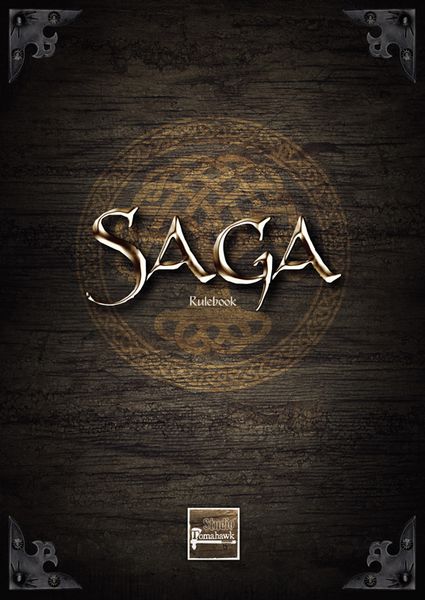SAGA Rulebook (2nd Edition) (2018) Board Game
SAGA is a historical miniatures wargame set in the ancient and medieval periods. The 2nd Edition of the rulebook was released in 2018 by Gripping Beast, designed by Alexandre Buchel and illustrated by Fred Machu. The game is known for its innovative gameplay mechanics and focus on strategic decision-making.
Game Components of SAGA Rulebook
How To Setup SAGA Rulebook
To set up SAGA, players select their warbands, each consisting of about 30 figures, and choose their army compositions based on clarified stats and special rules outlined in the sourcebooks. The battlefield is typically set on a 3ft by 4ft table. Players deploy their units and prepare their SAGA boards for the game. Army selection points remain unchanged, but troop stats and equipment rules are now more clearly defined in simple tables.
Gameplay Mechanics and Game Objective
– Generate SAGA dice based on unit sizes.
– Plan orders by matching dice pictures to abilities on the SAGA board.
– Carry out orders by removing the appropriate dice.
– Alternate turns with the opponent.
Player Experience
SAGA II offers a streamlined and quicker gameplay experience compared to its predecessor. The rules are simpler and more illustrated, reducing grey areas and making the game easier to learn. Players can set up and deploy their armies within ten minutes, and the game maintains a balanced approach with clear differences in troop types and equipment options. The Warlord remains a crucial figure, tougher and more resilient, but also requiring careful management to avoid exhaustion.
Pros
Cons
Personal Thoughts on SAGA Rulebook
SAGA II is ideal for those who enjoy historical miniatures wargaming and are looking for a game with deep tactical depth but simple, intuitive rules. It is particularly suited for players who appreciate scenario-based gameplay and the management of small warbands. The game’s balance and clarity make it accessible to new players while maintaining the complexity that veteran players enjoy. However, it may require some adjustment for players accustomed to the original version, especially regarding the changes in faction names and dice colors.
We are supported by our audience. When you purchase through links on our site, we may earn an affiliate commission, at no extra cost for you. Learn more.

